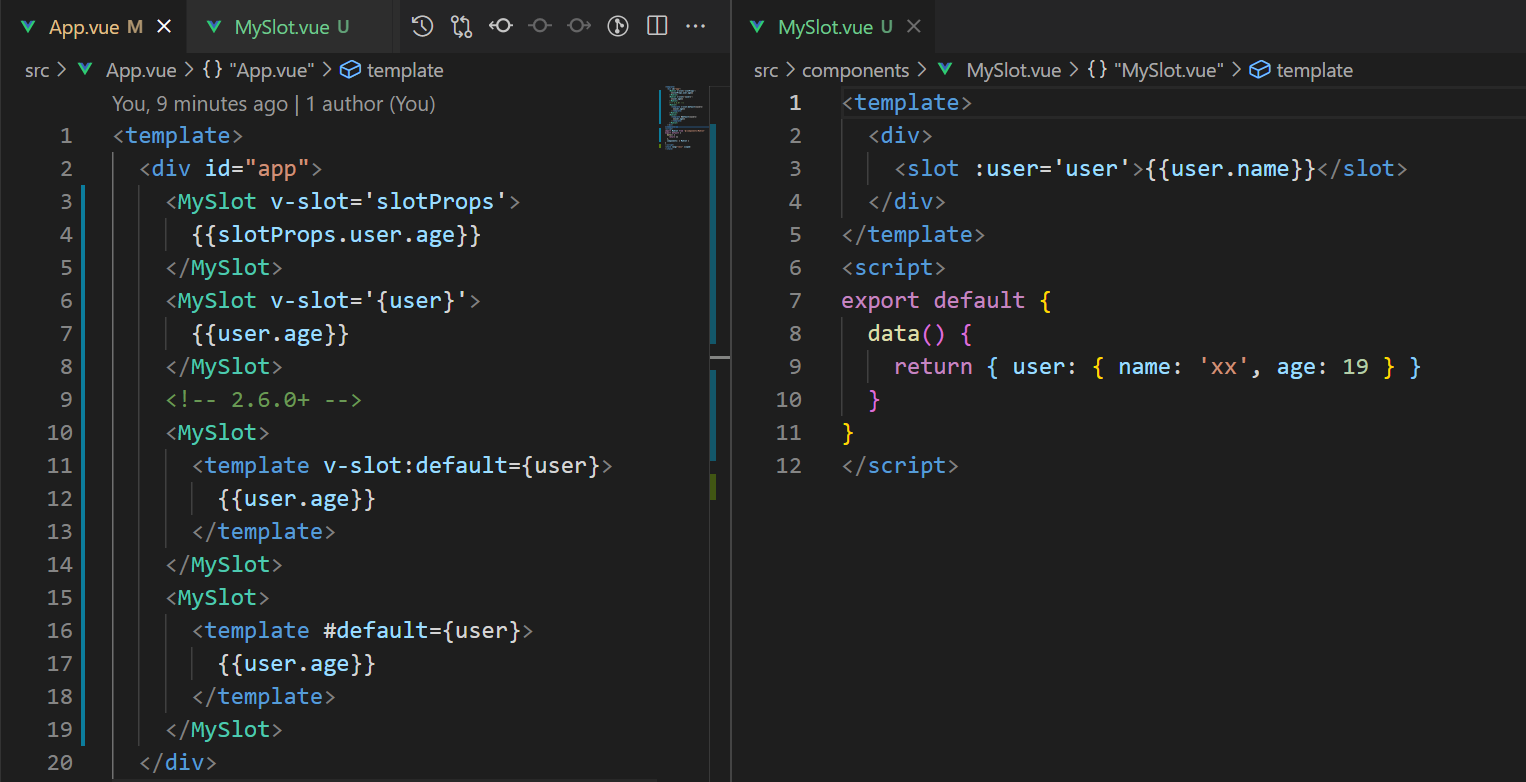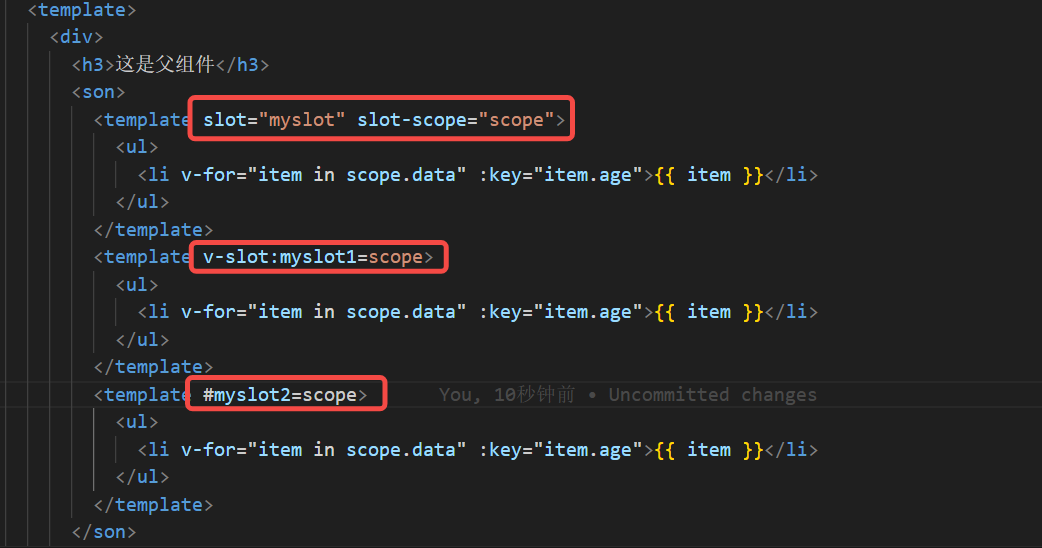vue插槽
vue插槽:在引入的组件标签中书写的内容是不会显示的,如果要显示这部分内容,需要用到<slot></slot>
1、插槽的概念:
比如说在Father组件中引入了Child组件,
Father:
<template> <div> <Child url="http://www.baidu.com"> <p>百度</p> </Child> </div> </template>
Child:
<template> <div> <a :href="url" target="_blank"> <slot></slot> </a> </div> </template>
<script>
export default {
props: ['url']
}
</script>
如果不在Child中写slot标签,那么在Father组件中 <p>百度</p> 就不会有显示
2、具名插槽和匿名插槽:
Father:
<template> <div> <Child> <div slot="header"> <h1>标题</h1> </div> <div> <p>内容</p> </div> <div slot="footer"> <p>底部</p> </div> </Child> </div> </template>
Child:
<template> <div> <header> <slot name="header"></slot> </header> <main> <slot></slot> </main> <footer> <slot name="footer"></slot> </footer> </div> </template>
此时,在父组件中的具名插槽和匿名插槽会对应地显示在子组件相应的位置,注意2.6.0+版本后,父组件中的写法:
<template> <div> <Child> <template v-slot:header> <h1>标题</h1> </template> <template> <p>内容</p> </template> <template v-slot:footer> <p>底部</p> </template> </Child> </div> </template>
3、插槽作用域
前面父传子使用的是props,那么子传父怎么办呢?
①先在子组件中用v-bind绑定一个属性值
<template> <div> <a :href="url" target="_blank"> <slot :val='"我是要传给父组件的值"'></slot> </a> </div> </template>
②在父组件中通过 v-slot='slotProps' 获取到属性集合对象
<template> <div> <Child v-slot='slotProps'> <p>{{slotProps.val}}</p> </Child> </div> </template>
也可以通过解构赋值的方式直接获取到当前属性
<template> <div> <Child url='xxx' v-slot='{val}'> <p>{{val}}</p> </Child> </div> </template>
4、具名插槽作用域
Child:
<template> <div> <header> <slot name="header" :val='111'></slot> </header> <main> <slot :val='100'></slot> </main> <footer> <slot name="footer"></slot> </footer> </div> </template>
Father:
<template> <div> <Child> <template v-slot:header={val}> <h1>标题</h1> <p>{{val}}</p> </template> <template v-slot='{val}'> <p>内容</p> <p>{{val}}</p> </template> <template v-slot:footer> <p>底部</p> </template> </Child> </div> </template>
插槽作用域:子组件中向父组件传递一个props,父组件中获取该props,并传递到子组件中

slot-scope='scope'
经常在element-ui中看到这个,这个就是插槽的作用域,将子组件的数据提供给父组件使用
这3种写法是等价的

分类:
vue




【推荐】国内首个AI IDE,深度理解中文开发场景,立即下载体验Trae
【推荐】编程新体验,更懂你的AI,立即体验豆包MarsCode编程助手
【推荐】抖音旗下AI助手豆包,你的智能百科全书,全免费不限次数
【推荐】轻量又高性能的 SSH 工具 IShell:AI 加持,快人一步
· 10年+ .NET Coder 心语,封装的思维:从隐藏、稳定开始理解其本质意义
· .NET Core 中如何实现缓存的预热?
· 从 HTTP 原因短语缺失研究 HTTP/2 和 HTTP/3 的设计差异
· AI与.NET技术实操系列:向量存储与相似性搜索在 .NET 中的实现
· 基于Microsoft.Extensions.AI核心库实现RAG应用
· 10年+ .NET Coder 心语 ── 封装的思维:从隐藏、稳定开始理解其本质意义
· 【设计模式】告别冗长if-else语句:使用策略模式优化代码结构
· 提示词工程——AI应用必不可少的技术
· 字符编码:从基础到乱码解决
· 地球OL攻略 —— 某应届生求职总结